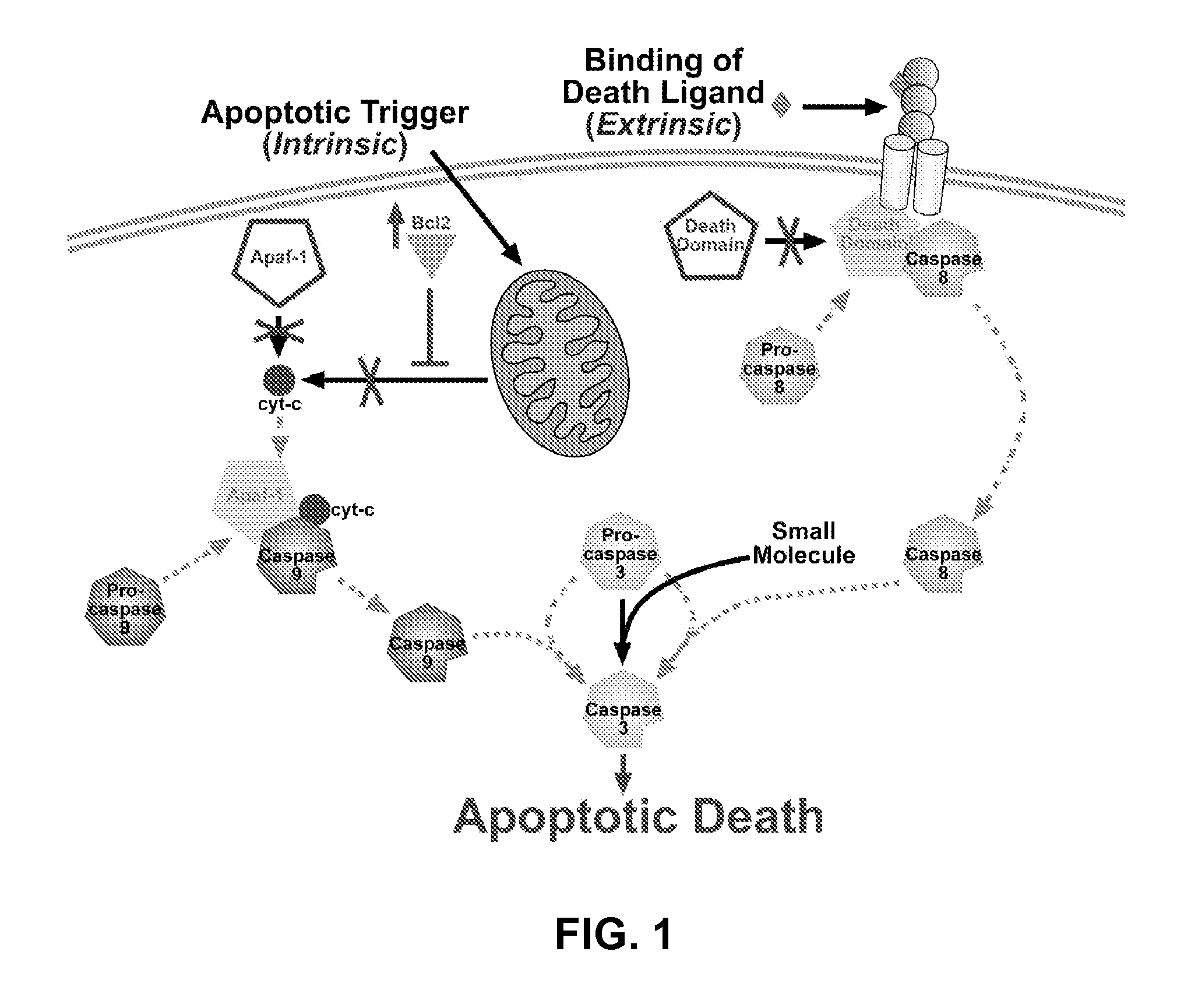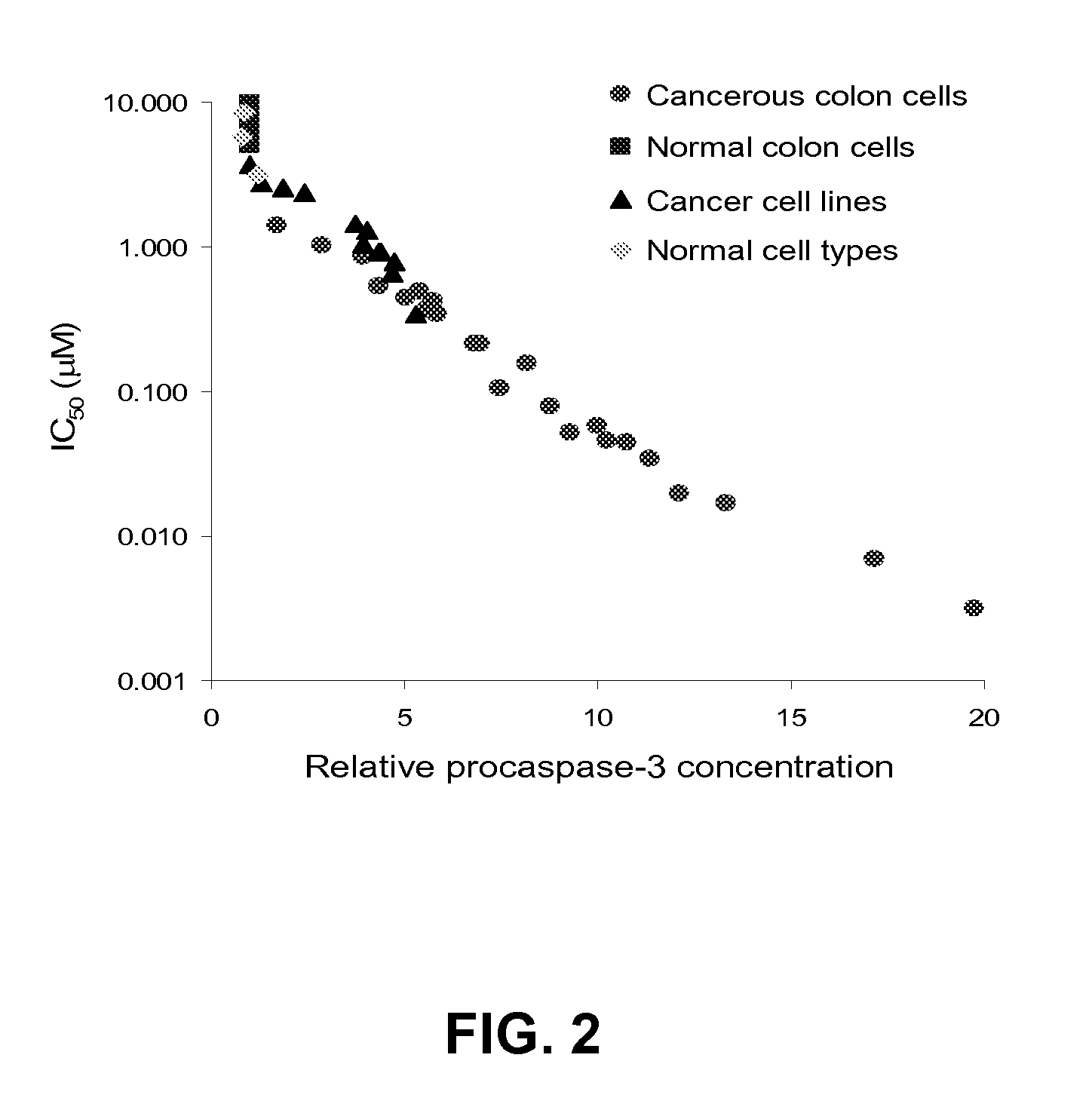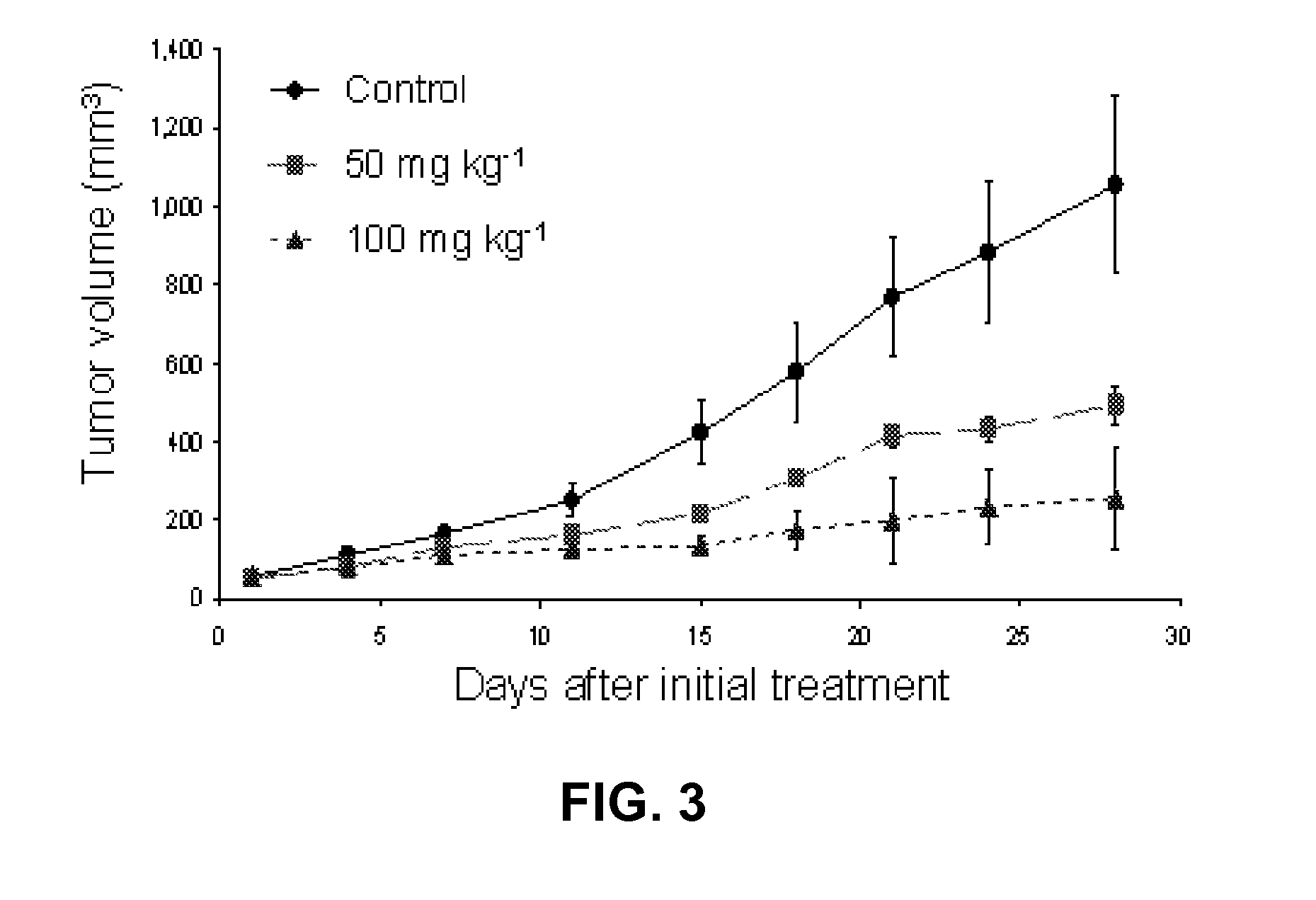Design, synthesis and evaluation of procaspase activating compounds as personalized Anti-cancer drugs
- Summary
- Abstract
- Description
- Claims
- Application Information
AI Technical Summary
Benefits of technology
Problems solved by technology
Method used
Image
Examples
example 1
PAC-1 and Personalized Anticancer Therapy
[0100]As discussed further herein, apoptosis is a type of programmed cell death common in multicellular organisms. Evasion of apoptosis is a hallmark of cancer and many cancers are resistant to natural apoptotic signals. This resistance is most often due to the aberrant expression and mutation of upstream apoptotic proteins which prevent the proper transmission of proapoptotic signals to downstream cysteine-aspartic acid proteases, the caspases. Ultimately, the activation of the executioner caspase-3 is the key committed step in most apoptotic pathways. Surprisingly, procaspase-3 is upregulated in many cancers but alterations in the upstream apoptotic cascade prevent it from being activated.
[0101]A number of proapoptotic compounds have been developed to target apoptotic proteins upstream of caspase-3. However, the aforementioned roadblocks often prevent these compounds from having their desired proapoptotic effect in cancerous cells. A person...
example 2
Syntheses of PAC-1 and Derivatives
[0109]Molecular modeling resulted in the lowest energy conformer of the PAC-1-Zn2+ complex shown in FIG. 15. This structure was obtained from a conformational search out of 23 low-energy conformers using MMFF force field. The model suggests interaction with the N-acyl hydrazone backbone, the phenolic hydroxyl and a cation-pi interaction with the benzyl ring.
[0110]A family of structurally modified PAC-1 derivatives was synthesized to investigate these structural components and their role in zinc binding and the cytotoxic potential of this family of compounds.
[0111]Four classes of derivatives were synthesized to investigate the phenolic position (class I), the benzyl group (class II), the combination of these rings (class III) and the N-acyl hydrazone backbone (class IV). These classes are shown above in Scheme 2.
[0112]Additional information about these compounds and classes is found in: Peterson, et al., J. Med. Chem. 2009, 52, 5721-5731. The majorit...
example 3
Evaluation of PAC-1 Derivatives
[0128]FIG. 11 shows relief of zinc mediated caspase-3 inhibition for compound 1-II-7. FIG. 12 shows relief of zinc mediated caspase-3 inhibition for compound 1-IV-3. The graphs represents three separate dose response experiments. The error bars represent the standard error of the mean for each data point. FIG. 13 shows the absorbance spectra for compound 1-II-6 with and without zinc.
[0129]PAC-1 derivatives were assessed in cell culture and in vitro assays for their ability to kill cancer cells, activate procaspase-3 in vitro, and bind zinc. Compounds that activate procaspase-3 generally have low 1050 values in U937 cells. Exemplary data is shown below in Tables 1-4.
[0130]The induction of cell death was determined using the U-937 (human lymphoma) cell line. U-937 cells grow in culture as a suspension. For these experiments, cells were exposed to a range of compound concentrations for 72 h, cell death was quantitated via a sulforhodamine B assay, and IC5...
PUM
| Property | Measurement | Unit |
|---|---|---|
| Mass | aaaaa | aaaaa |
| Mass | aaaaa | aaaaa |
| Molar density | aaaaa | aaaaa |
Abstract
Description
Claims
Application Information
 Login to View More
Login to View More - R&D
- Intellectual Property
- Life Sciences
- Materials
- Tech Scout
- Unparalleled Data Quality
- Higher Quality Content
- 60% Fewer Hallucinations
Browse by: Latest US Patents, China's latest patents, Technical Efficacy Thesaurus, Application Domain, Technology Topic, Popular Technical Reports.
© 2025 PatSnap. All rights reserved.Legal|Privacy policy|Modern Slavery Act Transparency Statement|Sitemap|About US| Contact US: help@patsnap.com



